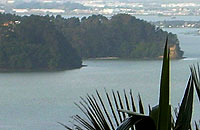
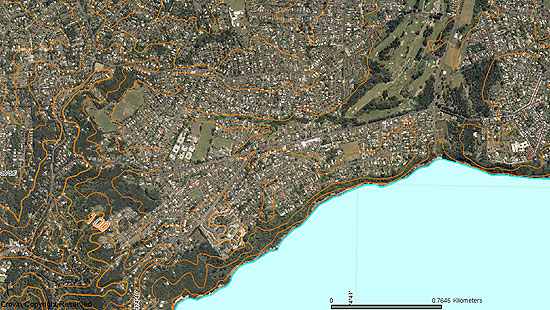
You can find topograhic maps and aerial photo's of Green Bay online at LINZ nztopoOnline...
< >
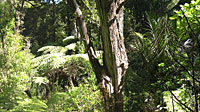
Panorama photographed in the Rahui Kahika Reserve - full of the remnants of Gondwanaland.
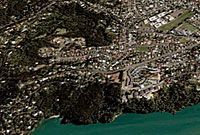
Google Earth image of Green Bay. Download a Google Earth placemark.
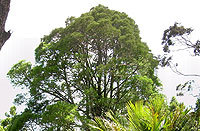
One of the ancient Kahiketea in the Rahui Kahika Reserve.

You can find property maps and information at Auckland Regional Council's ARCXplorer site...
A few short years ago my family moved to Green Bay in Auckland's Waitakere City - into a broad valley roughly extending from the Titirangi Road ridge east to Portage Road, and from Golf Road south to the Manukau coast. I was keen to find out more of the history of the area, and as a biologist I was particularly attracted to the many varied natural environments close to my new home.
My neighbourhood is now suburbia - I wanted to know who cut down the forest?
New Zealand is unique in the world as the last significant land to be discovered by humans. Green Bay itself is an edge zone between what remains of that wild nature and modern urban technology - on the edge of suburbia, the Waitakere bush, and the Manukau coast. Portage Road marks the border between Waitakere City and Auckland City - it was also both a passage and a border before the Europeans came, when Auckland was called Tamaki-Makau-Rau.
On a walk through the Rahui Kahika reserve guided by several local botanists, some of the giant 300-year-old kahikatea that give the reserve its name were pointed out. I couldn't help but be amazed that such stands of bush exist here at all given the history of the area. Here in our own neighbourhood was a living link to an earlier time, and one that predates European colonisation. We learned that nestled in the craggy branches of these trees are other plants, like an epiphytic orchid that is rare in the Waitakere Ranges. Effectively these trees are host to fragments of an ecosystem that can be traced all the way back to Gondwanaland.

